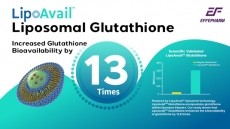Kemin and OmniActive settle lutein patent dispute
The terms of the settlement for the eye health antioxidant have not been revealed by either party, but OmniActive chief operating officer, Abhijit Bhattacharya, said the path had been cleared for both companies to move ahead and further develop the lutein market.
This spreads to DSM, which distributes Kemin’s version of the ingredient, FloraGLO. OmniActive’s version is called Lutemax 2020.
The settlement comes after a US District court ruled in September that a jury not a judge must determine the dispute and denied OmniActive’s non-infringement claim for summary judgment in regard to the patent US Patent No. 5,382,714 for ‘Process for Isolation, Purification and Recrystallization of Lutein from Saponified Marigold Oleoresin and Uses Thereof’.
“When there is litigation it is in everybody’s interest to find settlement,” Bhattacharya said. “Now we can focus on new projects. There are no ongoing hostilities but we have no plans to work together.”
A Kemin spokesperson gave no comment on the settlement.
Long-running feud
Kemin filed its suit against OmniActive on July 17, 2007 at the US District Court for the Middle District of Florida for infringing on methods pertaining to the isolation and purification of lutein and lutein compositions.
The 714 patent at issue in the OmniActive suit was licensed exclusively to Kemin through a research collaborator and Catholic University of America in 1995.
A 2007 report from analysts, Frost & Sullivan, predicts the global lutein market will hit $124.5 million in 2013. In 2006 it was valued the market at $105.1 million. Lutein, a nutrient found in various foods including green leafy vegetables and egg yolk, has a ten-year-plus history in the dietary supplement market as a nutrient to reduce the risk of age related macular degeneration (AMD).
AMD affects the central part of the retina called the macula, which controls fine vision, leaving sufferers with only limited sight. AMD affects over 30 million people worldwide, and is the leading cause of blindness in people over 50.












